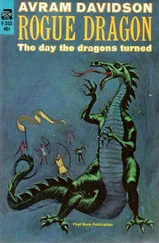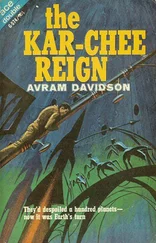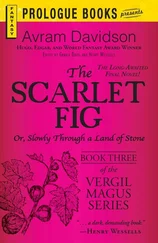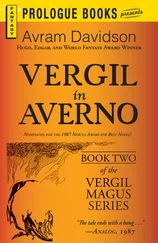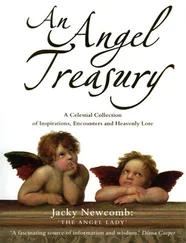“Please!” Dr. Turbyfil held up a protesting hand, but Professor Sanzmann neither saw nor heard him. With gleaming eyes gazing into the distance he went on.
“It comes the spring. The ogre family sports in the forest, and Simon with him. Then comes again the autumn and winter and at last the ogre child dies. It is sad. The parents cannot believe it. They moan to him. They rock him in their arms. No use. They bury him finally beneath the cave floor. Now you will ask,” he informed the glassy-eyed Turbyfil, “do they smear the body with red ocher as a symbol of life, of blood and flesh, as our scientists say? No. And why not? Because he is already smeared. All of them. All the time. They like it so. It is not early religion, it is early cosmetic, only.”
He sighed. Dr. Turbyfil echoed it.
“And so, swiftly pass the years,” Professor Sanzmann patted his hand on the empty air to indicate the passing years. “The old ogre is killed by a shebear and then the ogress will not eat. She whimpers and clasps Simon to her, and presently she grows cold and is dead. He is alone. The rest we know. Simon grows up, marries, has children, dies. But there are no more ogres.
“Not ever.
“Naturally, I am fascinated. I ask the peasants, where is there a cave called the Cave of the Ogres? They look at me with slanting glances, but will not answer. I am patient. I come back each summer. Nineteen thirty-one. Nineteen thirty-two. Nineteen thirty-three. Everyone knows me. I give small presents to the children. By myself I wander in the hills and search for caves. Nineteen thirty-four. There is a cow-tending child in the high pastures. We are friends. I speak of a cave near there. This, I say, is called Cave of the Ogres. The child laughs. No, no, he says, for that is another cave: it is located thus and so.
“And I find it where he says. But I am circumspect. I wait another year. Then I come and I make my private excavations. And — I—find — this.”
He threw open the carton and unwrapped from many layers of cotton wool something brown and bony, and he set it in front of Dr. Turbyfil.
“There was a fairly complete skeleton, but I took just the skull and jawbone. You recognize it at once, of course. And with it I found, as I expected, the medallion of Charles and Ferdinand. Simon had allowed them to bury it with the ogre child because he had been fond of it. It is all written in the photostatic paper copies… In 1936 the Nazis—”
Dr. Turbyfil stared at the skull. “No, no, no, no,” he whispered. It was not a very large skull. “No, no, no,” he whispered, staring at the receding forehead and massive chinless jaw, the bulging eye ridges.
“So, tell me now, sir museum director: Is this not a find more remarkable than big teeths in a Peiping herb shop?” His eyes seemed very young, and very bright.
Dr. Turbyfil thought rapidly. It needed just something like this to set the Sunday supplements and Mr. Godbody ablaze and ruin forever both his reputation and that of the Holden Museum. Years and years of work — the seventeen chapters on the Mousterian Era alone in Man Before the Dawn— the bequest from old Mr. Godbody—
Then the thought sprang fully-formed in his mind: Where there had been one skeleton, there must be others, unspoiled by absurd sixteenth-century paraphernalia — which had no business being there, anyway. He arose, placed a hand on Professor Sanzmann’s shoulder.
“My friend,” he said, in warm, golden, dulcet tones. “My friend, it will take some time before the Sanzmann Expedition of the Holden Museum will be ready to start. While you make the necessary personal preparations to lead us to the site of your truly astounding discovery, please oblige me by saying nothing about this to our — alas — unscholarly and often sensational press. Eh?”
Dr. Sanzmann’s rosy face broke into a thousand wrinkles and tears of joy and gratitude rolled down his cheeks. Dr. Turbyfil generously pretended not to see.
“Imagine what a revolution this will produce,” he said, as if he were thinking aloud. “Instead of being tidily extinct for fifty thousand years, our poor cousins survived into modern times. Fantastic! Our whole timetable will have to be rewritten …” His voice died away. His eyes focused on Professor Sanzmann, nodding his head, sniffling happily, as he tied up his package.
“Incidentally, my dear Professor,” he said: “before you leave I must show you some interesting potsherds that were dug up not a mile from here. You will be fascinated. Aztec influences! This way…mind the stairs. I am afraid our cellar is not very well arranged at present; we have been recataloguing…this fascinating collection formerly belonged to a pioneer figure, the late Mr. Tatum Tompkins.”
Behind a small mountain of packing cases, Dr. Turbyfil dealt Professor Sanzmann a swift blow on the temple with one of Uncle Tatum’s tomahawks. The sinister Continental scholar fell without a sound, his rosy lips opened upon an unuttered aspirate. Dr. Turbyfil made shift to bury him in the farthest corner of the cellar, and to pile upon his grave such a pyramid of uncatalogued horrors as need not, God and Godbody willing, be disturbed for several centuries.
Dusting his hands, and whistling — a trifle off-key — the hymn called “Bringing in the Sheaves,” Dr. Turbyfil returned to the office above stairs. There he opened an atlas, looking at large-scale maps of Germany. A village named Maldenhausen, in a valley…(Where there had been one skeleton, there must be others, unspoiled by absurd sixteenth-century paraphernalia — which had no business being there.) His fingers skipped joyfully along the map, and in his mind’s eye he saw himself already in those valleys, with their lovely names: Friedenthal, Johannesthal, Hochsthal, Neanderthal, Waldenthal…beautiful valleys! Green, remote, enchanting…full of mysteries.
The Woman Who Thought She Could Read
INTRODUCTION BY MARTHA SOUKUP
I happened on short science fiction and fantasy during heady times, the 1970s. Many of the great anthology series were publishing then : Orbit, Universe, New Dimensions, Dangerous Visions: exciting books filled with stories by strong new voices. A walk to the library after school would reap an armful of stories by Lafferty, Delany, Wolfe, Wilhelm, Bishop, Piserchia, Effinger, Silverberg, Dozois, Russ, so many, too many to keep in your head. Fine voices, quirky, intelligent, and fresh: half of what I learned about science fiction and fantasy I learned from stories like theirs.
But the hottest new voices couldn’t top what Avram Davidson had done in a collection of short stories, written as much as two decades before they came along. Pocket Books issued a paperback edition of his 1962 collection Or All the Seas with Oysters in 1976. The copy I bought then sits on the arm of my chair now. The story ending the book, in the place of honor, is “The Woman Who Thought She Could Read.”
The stories in that reprint taught me as much about what short stories could do as any book I’d read. I wondered then and wonder still: Why write a novel when you can make a few thousand words like “The Woman Who Thought She Could Read” this rich?
Davidson gives his characters voices as distinctive as his own. Their voices reveal things about them they don’t know about themselves, from the narrator recollecting his boyhood. It seems there are more characters than there are, because Davidson creates in this story a warm, but unsentimental, sense of a community; and from the community a sense of a whole America of several generations ago, living and breathing and laughing and worrying, loving, screaming. The curious boy recalled by his adult self; the cheerful immigrant midwife and bean-reader Mrs. Grummick; friends and neighbors painted, sometimes, in strokes just a sentence or three long. He even tosses in vivid characters long dead before his story opens. It deepens the sense of ongoing community. Folks. You recognize them when he shows them to you.
Читать дальше


